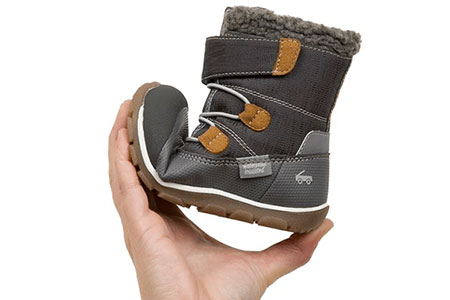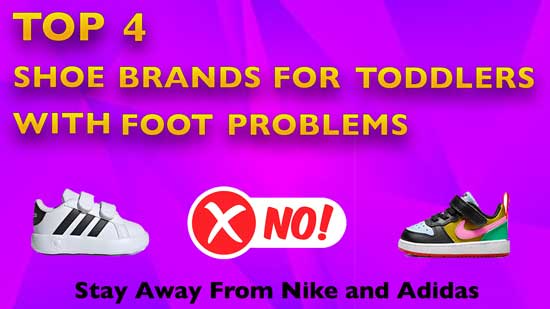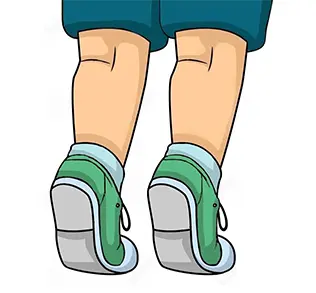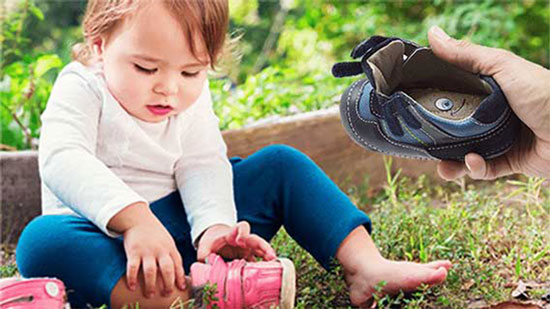Supportive Boots for Toddlers – Supportive and Lightweight for Toddlers with Foot Problems

Has your toddler been diagnosed with a foot condition and your medical professional recommends that he or she wears supportive shoes at all times? Maybe you already have a pair of supportive sneakers but now you are unsure about what to do during the winter time. Supportive boots for toddlers are essential because they can help in proper foot and leg development during a time when children are learning to walk and run confidently. A good boot provides the necessary ankle support, reducing the likelihood of injuries and aiding balance. Plus, it helps to promote correct posture during the winter season, setting up your toddler for healthier movement habits later in life.
I Am a Shoe Fitter with Over a Decade of Experience
I work for a children’s shoe store that focuses on helping children with foot problems. Experts in children’s health such as pediatricians and podiatrists underscore the value of correctly supporting toddlers’ feet when they are dealing with a foot condition such as a high degree of flat feet, low muscle tone, knock knees, etc.

An ill-fitting sneaker or boot or any shoe that fails to provide proper support can lead to a cascade of issues that might impact your toddler now and as they continue to grow. From the significance of flexible outsoles to the various material options that cater to sensitive skin, let’s step into the key features that your toddler’s next pair of boots should have.
3 Key Features to Look For in Toddler Boots
When you’re in the market for toddler boots, it’s not just about picking the cutest pair. You need to zero in on features that promote healthy foot development and ensure comfort. With that in mind, let’s delve into what makes a boot truly supportive for your little one.
First off, the anatomy of a supportive boot sets it apart. You want a boot that offers a stiff heel counter, yet a flexible toe box. This combo allows heel stability while giving those little toes room to wiggle and grip, aiding in balance and walking mechanics. Below you can find the difference between a boot that provides a firm heel counter (for heel stability) versus a boot that has a heel counter that is too soft:

Boots with a stable base of support can help improve your toddler’s foot posture and help with balance. Below you can find an image of two toddler boots made by the same shoe company (Merrell). Do you notice how to boot on the right has a more supportive stable base of support compared to the boot on the left?

Last but not least, the boots that I recommend are supportive but lightweight and flexible at the same time. Your toddler’s boots should always bend at the toes but not further.

Picking the right materials is another huge piece of the puzzle. Toddlers can have sensitive skin, so choosing boots made with natural materials, like leather or cotton, can help prevent irritation. Synthetic options are plentiful, though, and modern advancements have made them more breathable and suitable for sensitive skin than ever before.
Finally, ensure you’re getting boots with secure closures—either Velcro or laces—and that there’s room to grow without being too loose. Stay away from boots that provide size zippers as they don’t provide any lateral support.
Top-Rated Supportive Boots for Toddlers: My Top Picks
All of the boots that I recommend below promote healthy foot and ankle development for your little ones. Disclosure: Some links in this post may be affiliate links and we may receive a small commission (at no extra cost to you) when you click our links and make purchases.
- Shoe style Malmo by Memo
- Fits medium and wide feet
- This is an orthopedic boot
- High and stiff heel counter
- Removable insoles
- Order this boot half a size larger than your toddler’s current foot size
- Shoe style Chicago by Memo
- Fits medium and wide feet
- This is an orthopedic boot
- Supportive outsoles enhance shock absorption
- Triple velcro closure for maximum supporting stability
- Built-in high orthotic brace helps support flat feet
- Removable insoles
- Order this boot half a size larger than your toddler’s current foot size
- Shoe style Atlas II by See Kai Run
- Fits medium, wide, and extra wide feet (accommodates high insteps)
- This is a hiking boot/snow boot that can be worn for long periods of time
- Insulated so it can be worn in the snow
- Waterproof
- Double velcro closure
- Awarded the Seal of Acceptance from the American Podiatric Medical Association (APMA)
- Order this boot a whole size larger than your toddler’s current foot size
- Shoe style Atlas II by See Kai Run
- Fits medium, wide, and extra wide feet (accommodates high insteps)
- This is a hiking boot/snow boot that can be worn for long periods of time
- Insulated so it can be worn in the snow
- Waterproof
- Double velcro closure
- Awarded the Seal of Acceptance from the American Podiatric Medical Association (APMA)
- Order this boot a whole size larger than your toddler’s current foot size
- Shoe style Kootenay by Keen
- Fits medium and wide feet
- This insulated hiking boot can be used in cold days, rain, and snow
- Leather upper
- Waterproof
- Eco anti-odor for natural odor control
- Removable PU insole for long-lasting comfort
- Fleece lining for warmth
- Order this boot half a size larger than your child’s current foot size
- Shoe style Primigi
- Fits medium and wide feet
- This insulated hiking boot can be used in cold days, rain, and snow
- Plush lined for comfort
- Double velcro closure for easy on and off
- Removable PU insole for long-lasting comfort
- Order this boot a whole size larger than your child’s current foot size
- Shoe style Knotch by Keen
- Fits medium, wide and extra wide feet (accommodates high insteps)
- This insulated boot can be used in cold days, rain, and snow
- Waterproof nubuck leather upper
- Removable insoles
- KEEN.WARM 100G insulation helps keep feet warm in temperatures down to -4° F / -20° C, but still allows your child’s feet to breathe
- Double velcro closure
- Order this boot half a size larger than your child’s current foot size
- Shoe style Symbyosabx by Geox
- Fits medium and wide feet
- Rigid heel counter
- Double velcro straps
- Order this boot half a size larger than your child’s current foot size
From waterproof wonders suitable for puddle-jumping to breathable options for those warmer days, these picks cater to all weather conditions and toddler adventures. Pediatric specialists have also weighed in on the designs that truly offer the support toddlers need.
Choosing the right boot for your toddler doesn’t mean you have to spend a fortune. It’s all about finding that sweet spot where price meets performance. While orthopedic boots will obviously be more expensive, the list of boots I showed you has both options at different price points.
Fitting Tips and Tricks for Toddler Boots
If you want to ensure your little one’s feet are happy and healthy, getting the fit right is crucial. I’m going to share with you some simple yet effective tips to size toddler boots accurately.
Your first attempt doesn’t need to be your last, but starting with a solid step-by-step process lays the groundwork. I created a different resource for an accurate home measuring technique. An ill-fitting boot can lead to blisters or even hinder walking development. So, picking the correct size is a cornerstone of supportive footwear for your toddler.
In my opinion, recognizing the signs of good and poor fits is key. A well-fitting boot will have about a thumb’s width of space in front of the toes and fit snugly—not tightly—around the ankle. If your toddler’s heel slips out or they’re tripping over, that’s a sign of a poor fit.
Don’t worry too much about short-lived sizes. Toddlers grow quickly, and regular size checks are necessary. Clear indicators to size up include toe imprints at the front of the boot, complaints of discomfort, or red marks on the feet after removing the boots.

I’m here to help you make sure your toddler can play without any holdbacks. A supportive boot should complement their movements, be it running, jumping, or climbing. Ensure the boots flex where the toes bend and have enough support around the ankle to prevent wobbling without being restrictive.
Maintaining Your Toddler’s Supportive Boots for Long-Lasting Comfort
Caring for your toddler’s boots isn’t just about keeping them clean; it’s a crucial practice that extends their durability and ensures continuous foot support. Here’s a simple guide for you: Make sure that you always undo the velcro straps or laces of the boots before putting them on and off your toddler’s feet. This will help preserve the support of the boots.
What if the boots start showing signs of wear? Check the soles and seams regularly for any damage. Small issues can often be fixed at home with a bit of glue or by stitching up loose seams. In case of significant wear, you might want to consider fitting an orthotic inside the boots or replacing them with a more supportive style.
Let me know in the comments section below if you have found a pair of supportive boots that worked well for your toddler’s foot condition. You can also ask any questions that you might have and I will get back to you as soon as possible.











